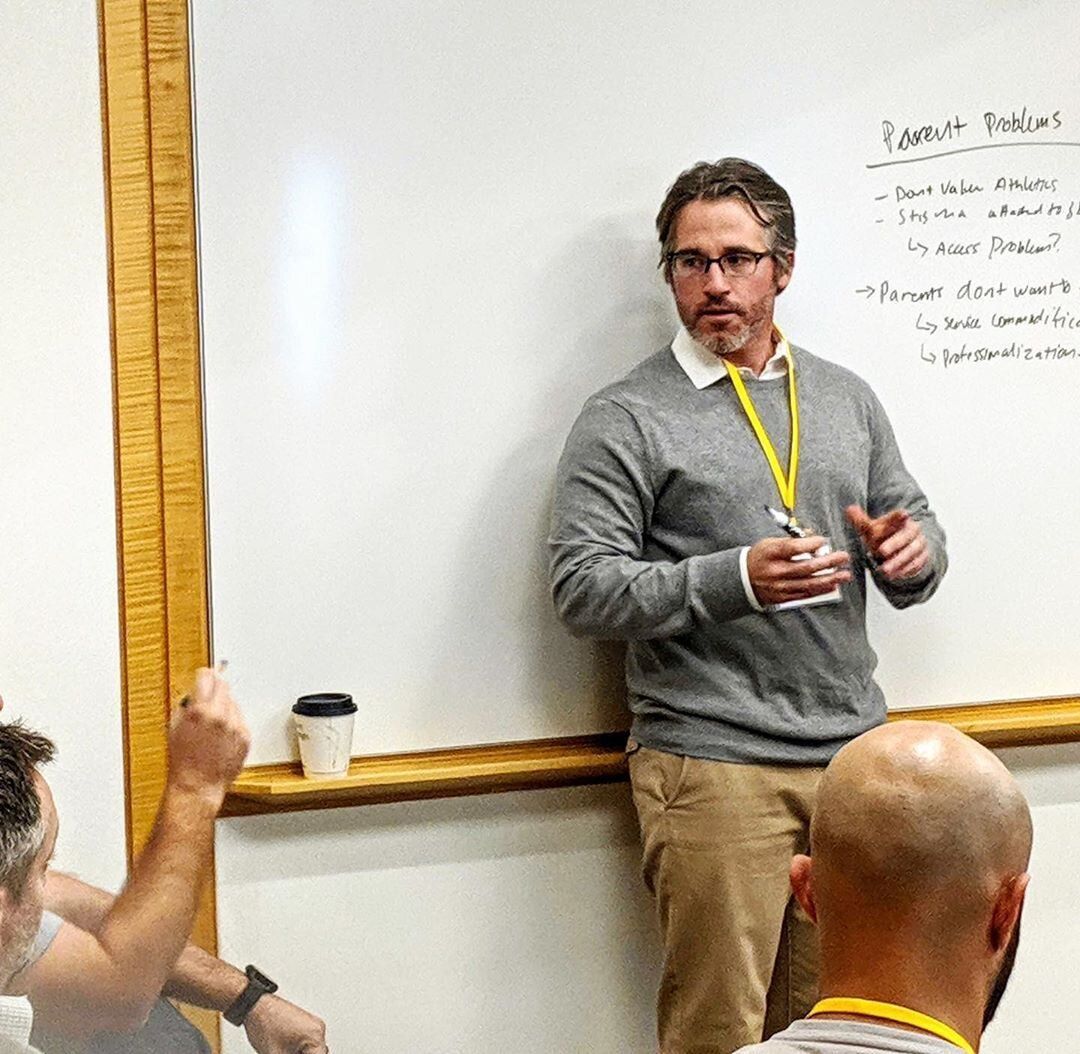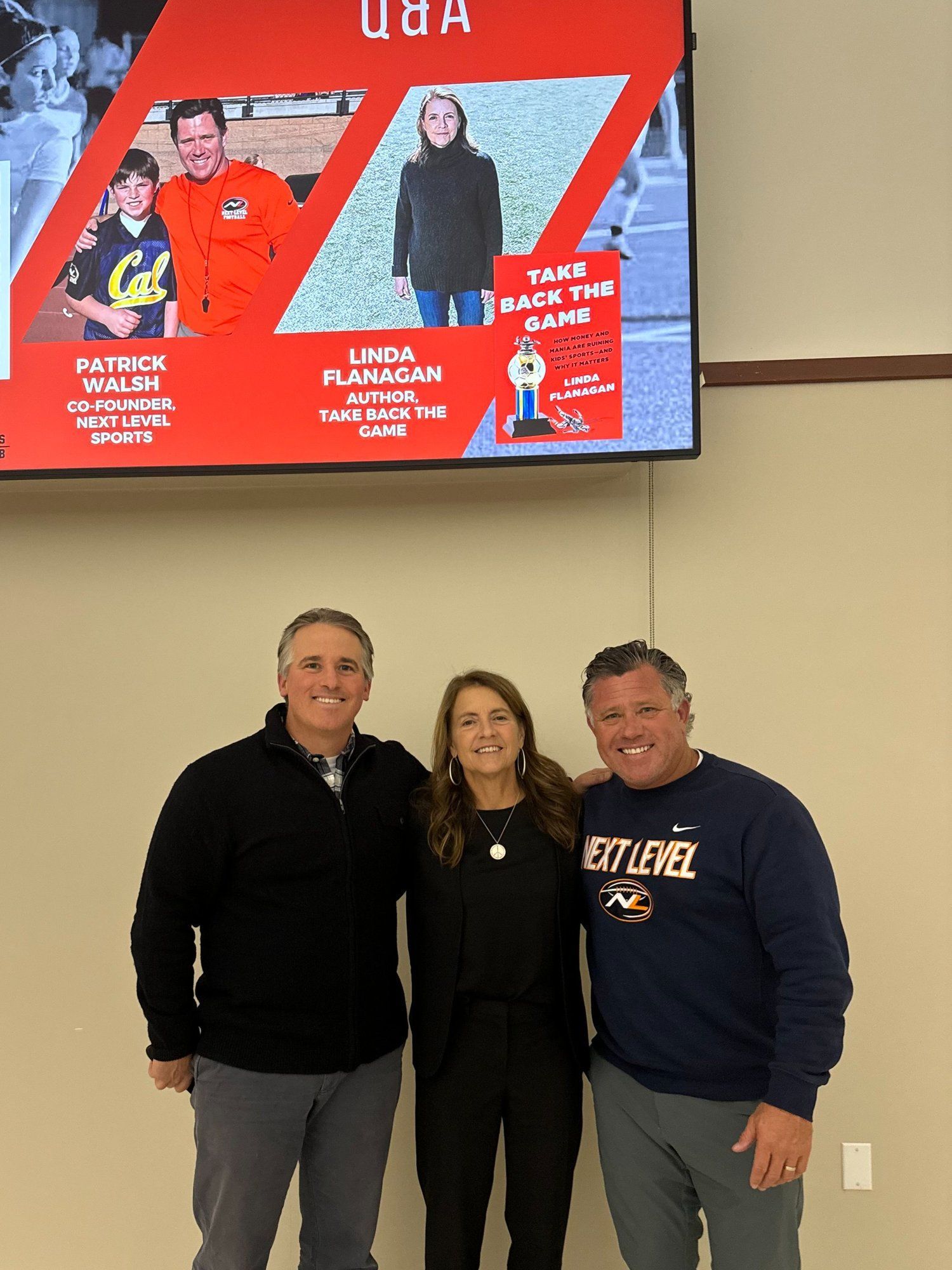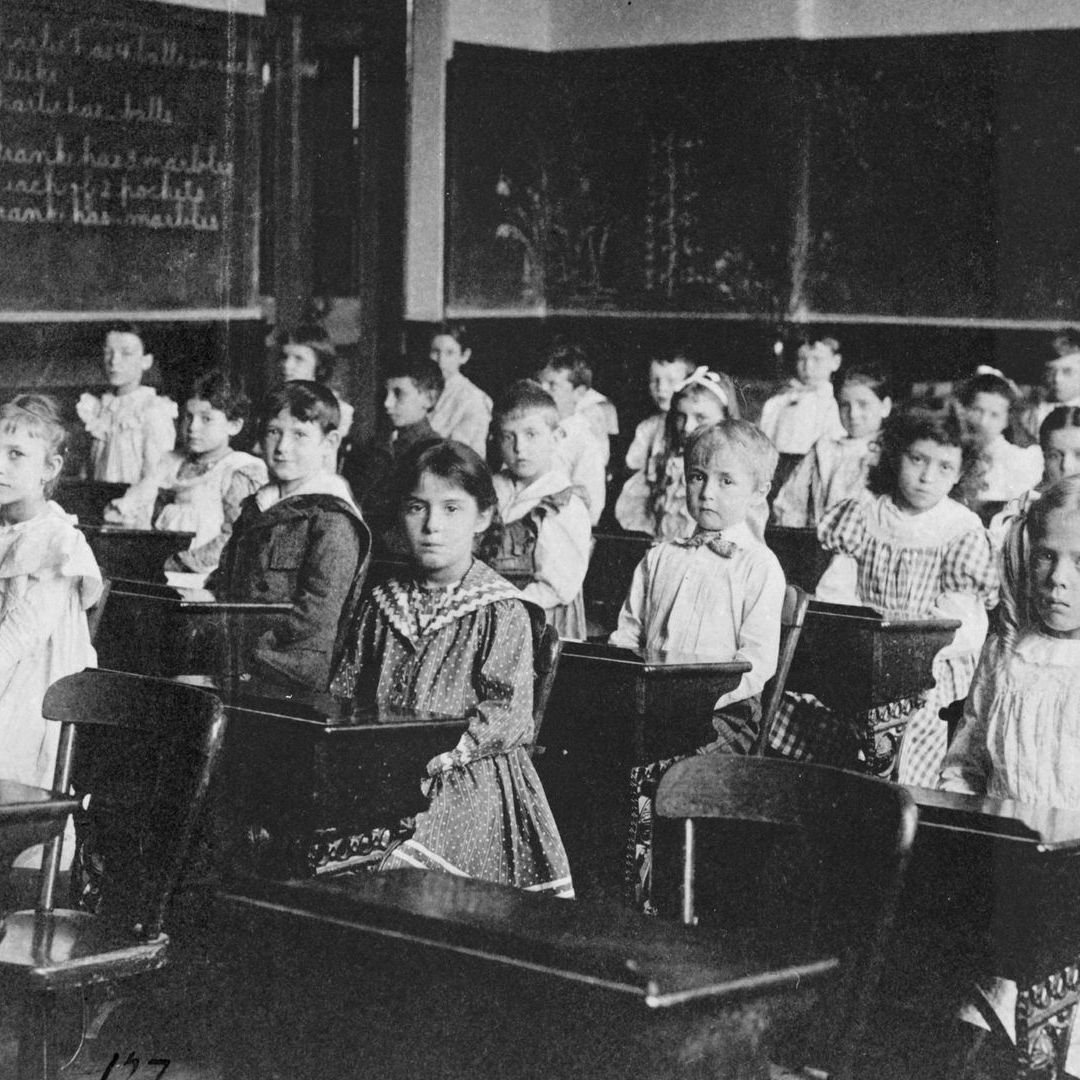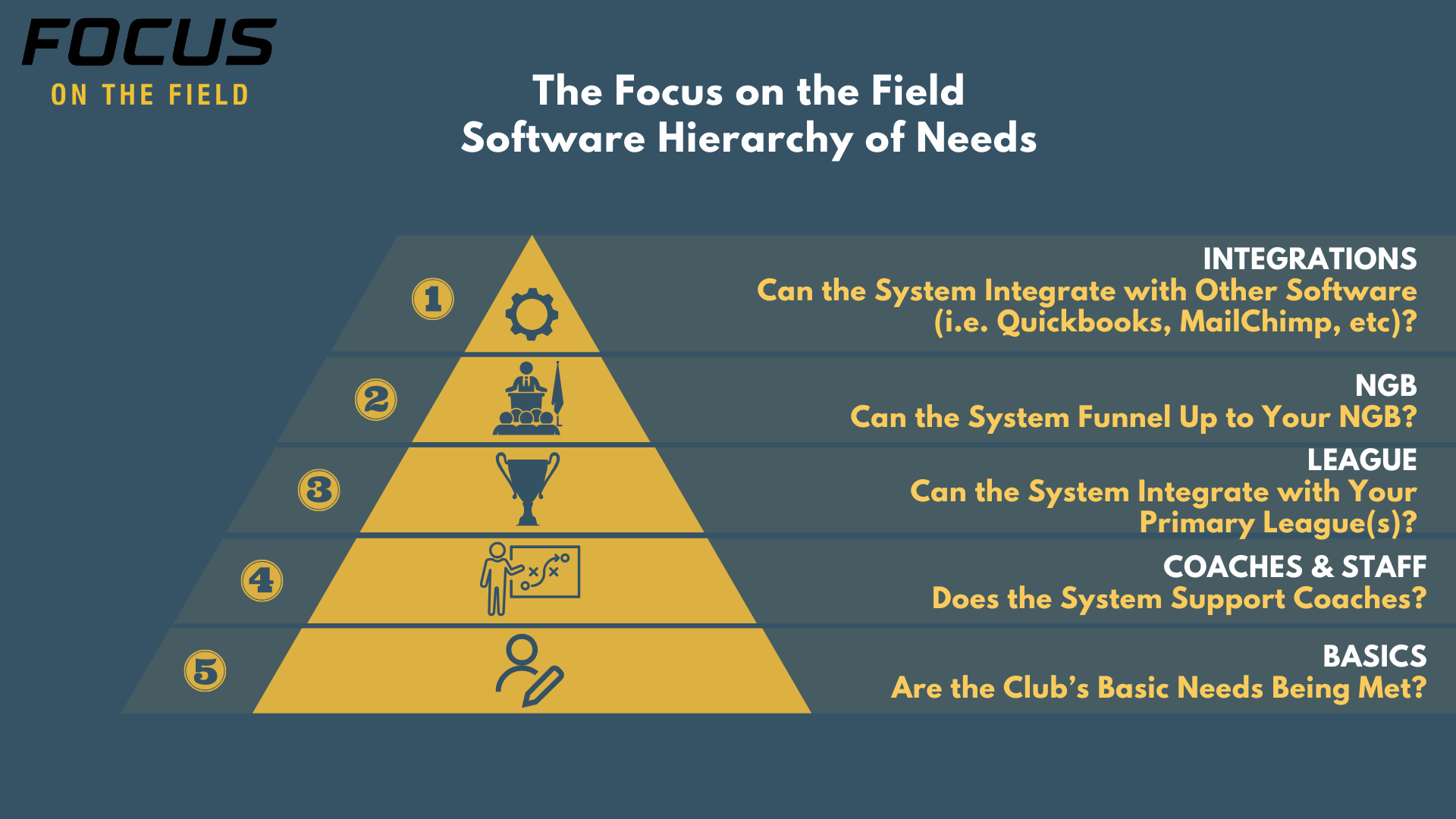Series: ‘A Note to Parents’ - Focus on the Fit

In this series of posts, published by our CEO Tyler Kreitz when he was the COO of ADVNC Lacrosse, Tyler sheds light on pressing issues facing families in youth sports. Not only does Tyler provide valuable insight on these issues from top researchers in the space, but also tangible solutions to instill positive change in the youth sports ecosystem coming out of the COVID-19 pandemic.
10/24/19
Dear Parents,
Over the past few weeks, six ADVNC and Seattle Starz players (and counting) have announced their commitments to top tier NCAA Division I lacrosse programs. Aside from these kids achieving their goal of reaching the pinnacle of the sport, the universities themselves (Cornell, Princeton, Brown, Notre Dame, North Carolina, and Michigan) read like a dream for any parent who wants to put their kid’s college sticker on the back of their car. These college commitments are incredible achievements for these players and as a program, we could not be prouder. Each of these kids earned this reward after years of hard work both on the field and off.
Around the same time these commit announcements came out, I noticed that US News and World Report announced their 2020 list of top Global Universities , which has taken the oft-derided ranking of colleges to a global scale. The validity of these rankings is subjective and their methodology, the values, and what they actually measure have been dissected and laid to bare by some very smart people (Gladwell, always Gladwell). All that said, and all hand wringing aside, these lists do matter as they graft onto our aspirations for our kids and our pride in where we went to school. It’s easy to deride them for what they are, but it’s hard to say that they don’t have an effect.
These lists contribute to the increased pressure that kids and parents are feeling around college and the college search process by consistently ranking the same 40 to 50 at the top. They also ignore the value of personal fit for each student, let alone the notion that where you go to school does not make you who you are .
We also unintentionally contribute to this pressure cooker. At ADVNC, we work with many kids who’s desire to play high-level DI lacrosse means aiming for the schools on the top of these rankings. A part of helping kids get the exposure they need to play NCAA DI lacrosse in college is celebrating those who have achieved this in our program. It draws more attention to our teams, which in turn helps other kids gain opportunities. Yet it also turns up the pressure cooker by consistently emphasizing this small group of schools. We’re torn with this duality, as are many organizations like ours. How do we deflate this pressure cooker while we’re inherently contributing to it?
As a lacrosse focused company, we feel there are easy steps we can take. The first is to reemphasize the focus on colleges that fit the ‘40 year plan’ of a player as opposed to the ‘4-year plan’. By the ‘40-year plan,’ we mean putting the emphasis on colleges that fit with the student on a holistic level and not only on an athletic one. This is easier in lacrosse than in other sports as lacrosse is not as soaked with money and ripe for corruption. For instance, the shoe companies and the industries that so heavily influence (and corrupt) AAU basketball don’t exist in lacrosse. Nor do huge professional leagues, with their incredible financial rewards. This allows the focus to remain on colleges that fit the players’ educational and life goals and lets lacrosse play its role in helping open doors into education opportunities.
By establishing the ‘40-year plan’ as the focus, college fit becomes the natural goal. Our partners at Athens Advisors put this at the center of their advising process as studies of student outcomes, both anecdotal and rigorous, show that school ‘fit’ matters much more than rank. A focus on college fit alone would deflate much of the pressure that families and students feel. Even by the stricter standards of eligibility into the U.S. News rankings, there are around 1,400 regionally accredited colleges and universities offering four-year undergraduate degree programs. For families who are part of ADVNC, however, the number of colleges offering a good ‘fit’ and lacrosse is still considerable.
At first glance, this may seem counter-intuitive. There are still only 71 NCAA Division I lacrosse programs. Adding in Division II and there are 61 more. Division III adds 236, for a total of 405 schools offering NCAA men’s lacrosse. Most of these schools are on the Eastern seaboard and for lacrosse-playing student-athletes who want a larger, more raucous collegiate experience the NCAA options are limited. And forget it if you want to stay in California or the west coast.
However, with the onset and growth of the Men's Collegiate Lacrosse Association (MCLA), the options to play lacrosse in college, and find a college that fits, grow considerably. 299 schools across the country have teams that participate in the MCLA. These schools range in size and type and cover a broad geographic range that NCAA lacrosse doesn’t cover. Debating the merits of MCLA vs. NCAA lacrosse is ridiculous in our opinion, they are different, but the end result of what they contribute - an opportunity to play competitive lacrosse at a college that fits your 40-year plan- remains.
In partnering with ConnectLax and utilizing their easy to use college search tool , we’re able to help kids and families find the schools that provide an initial fit. This takes a step in the right direction to where families and players should focus. The next step is to break down the process of getting to those colleges that fit and framing the process as the goal.
In speaking with Dr. Peggy Hock, a 25 year veteran of the college admissions process and former president of the Western Association for College Admissions Counseling (WACAC), about these ideas she advised there still is no ‘Golden Ticket’ process that will guarantee admission to any university. It just doesn’t work that way. Libraries could be filled and college courses taught on dissecting the admissions process at universities. It is a world filled with variables that a student and family simply cannot control.
What can be controlled is how one navigates and approaches the process and the variables they can control. When I have worked with kids and families on this, I frame the process as a climb up a mountain. As with any climb the reward at the top of the mountain is the view. In this case, the higher you go the greater the view of the schools that fit the profile of the student and their 40-year plan. To get to this view it takes skill, dedication, and if you're an aspiring athlete - a bit of genetic luck. Yet there is a path to follow, much like there are trails to follow to the summit of a peak. As you follow the path and focus on controlling what you can, i.e. academic effort, working hard in practice, being a good teammate, each successive step reveals a greater view from where you were before. The goal becomes the process, and following the path to being a good student-athlete ends up opening more education opportunities.
This is not in any way perfect advice, nor the prescription for getting into your dream school. It is, however, an approach that addresses the real issue we’re trying to confront - the pressure cooker environment of college admissions in youth sports. We will continue to advocate for all of our families and celebrate their college commitments when they occur, just as much as we celebrate and encourage each player to pursue their ‘40 year’ goal. While we’re doing this, we hope to see the pendulum on college choice and admissions swing back, away from the rankings and towards the student.
It seems like the best path to take.
Until next time-
Tyler











